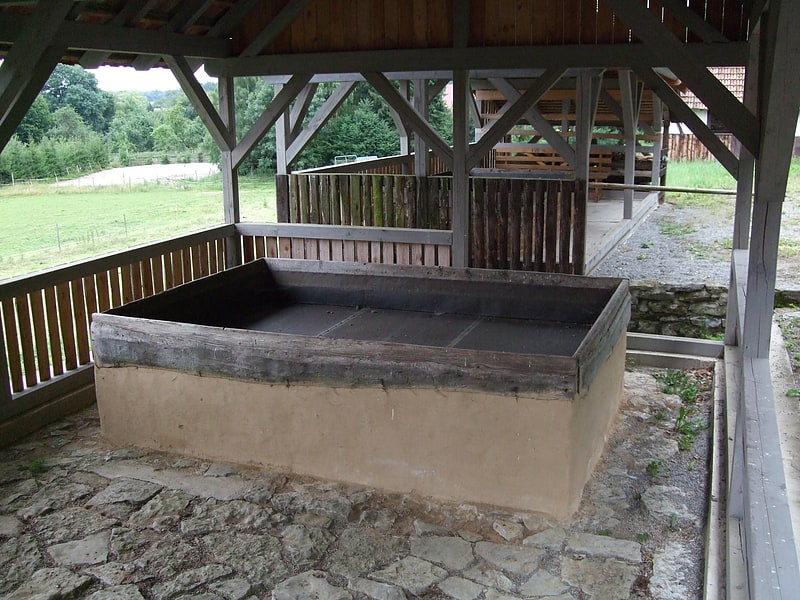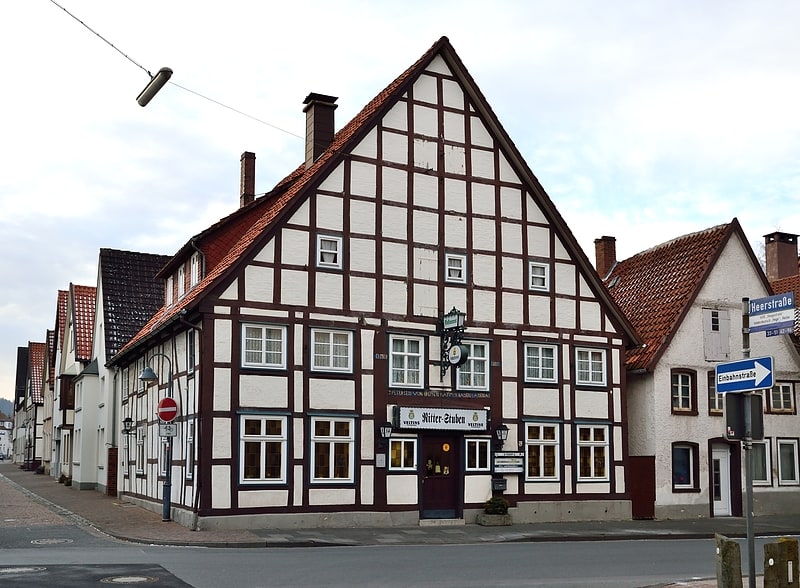Discover 4 hidden attractions, cool sights, and unusual things to do in Horn-Bad Meinberg (Germany). Don't miss out on these must-see attractions: Eulenturm, Evangelische Stadtkirche Horn, and Jewish Cemetery. Also, be sure to include ehemaliges Spritzenhaus in your itinerary.
Below, you can find the list of the most amazing places you should visit in Horn-Bad Meinberg (North Rhine-Westphalia).
Table of Contents
Eulenturm

Also known as: Darre
An oast, oast house or hop kiln is a building designed for kilning hops as part of the brewing process. They can be found in most hop-growing areas and are often good examples of vernacular architecture. Many redundant oasts have been converted into houses. The names oast and oast house are used interchangeably in Kent and Sussex. In Surrey, Hampshire, Herefordshire and Worcestershire they are called hop kilns.
They consist of a rectangular one or two-storey building (the "stowage") and one or more kilns in which the hops were spread out to be dried by hot air rising from a wood or charcoal fire below. The drying floors were thin and perforated to permit the heat to pass through and escape through a cowl in the roof which turned with the wind. The freshly picked hops from the fields were raked in to dry and then raked out to cool before being bagged up and sent to the brewery. The Kentish dialect word kell was sometimes used for kilns ("The oast has three kells") and sometimes to mean the oast itself ("Take this lunchbox to your father, he's working in the kell"). The word oast itself also means "kiln".
The earliest surviving oast house is at Golford, Cranbrook near Tunbridge Wells. It dates from sometime in the 17th century and closely mirrors the first documentary evidence on oasts soon after their introduction of hops into England in the mid 16th century. Early oast houses were simply adapted barns but, by the 18th century, the distinctive tall buildings with conical roofs had been developed to increase the draught. At first these were square but around 1800 roundel kilns were developed in the belief that they were more efficient. Square kilns remained more popular in Herefordshire and Worcestershire and came back into fashion in the south east in the later 19th century. In the 1930s, the cowls were replaced by louvred openings as electric fans and diesel oil ovens were employed.
Hops are today dried industrially and the many oast houses on farms have now been converted into dwellings. One of the best preserved oast house complexes is at the Hop Farm Country Park at Beltring.[1]
Address: 22 Leopoldstaler Straße, Horn-Bad Meinberg
Evangelische Stadtkirche Horn

The Evangelical Church Horn or Stadtkirche Horn is a Protestant Reformed church in Horn and belongs to the Blomberg class in the Lippische Landeskirche. The church building is registered under the number 01.4 in the list of architectural monuments in Horn-Bad Meinberg.
Jewish Cemetery

Also known as: Jüdischer Friedhof
The Jewish cemetery in Horn was the burial place for the Jews in Horn, Bad Meinberg and surrounding villages. The cemetery on Paderborner Straße has been listed as a monument in Horn-Bad Meinberg since April 25, 1995.
Ehemaliges Spritzenhaus

The list of monuments in Horn-Bad Meinberg contains the listed buildings on the territory of the city of Horn-Bad Meinberg in the district of Lippe in North Rhine-Westphalia. These monuments are registered in the list of monuments of the city of Horn-Bad Meinberg; the basis for the inclusion is the Monument Protection Act of North Rhine-Westphalia.
Objects removed/deleted from the list of monuments: